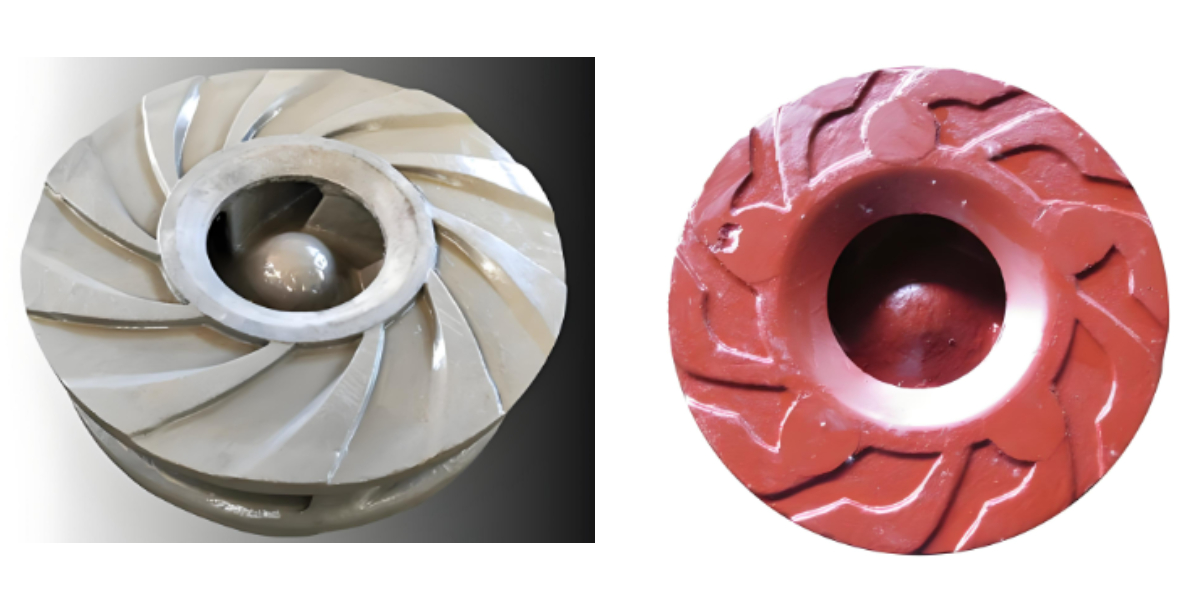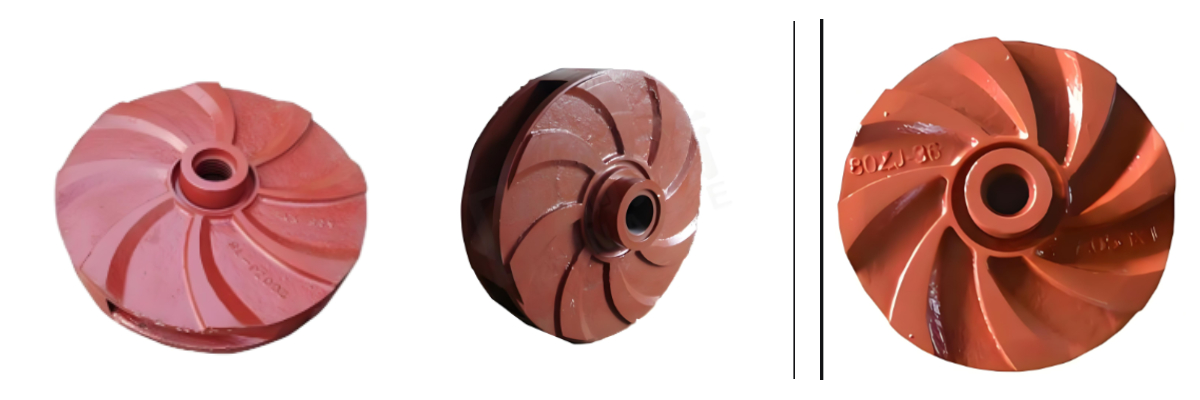Slurry Pump Back Plate
The surface of the impeller is often made of high chromium alloy or rubber material to enhance its wear resistance. For example, a dense oxide film is formed on the surface of high chromium alloy impellers, which can resist solid particle erosion; Rubber material extends its service life by buffering the impact of elastic particles. In addition, the design of the impeller back blades can timely discharge the backflow slurry, reducing the risk of erosion and blockage.
The main function of the slurry pump impeller is to generate centrifugal force through rotation, achieving energy conversion and transportation of solid-liquid mixed media. The specific functions include:
energy conversion
The impeller converts the electrical energy of the motor into mechanical energy, driving the impeller to rotate. During the rotation process, the impeller transfers mechanical energy to the solid-liquid mixture medium, allowing it to obtain kinetic and potential energy.
Media transportation
When the impeller rotates, the solid-liquid mixture is sucked in from the center of the impeller and thrown out along the blades towards the outer edge. Under the action of centrifugal force, the medium gains high speed and pressure, and is discharged from the pipeline through the pump casing, completing continuous transportation.
Structural lubrication
Some patented designs (such as anti drying components) use lubricating fluid to maintain impeller lubrication, avoiding the problem of jamming caused by material drying and clumping.








